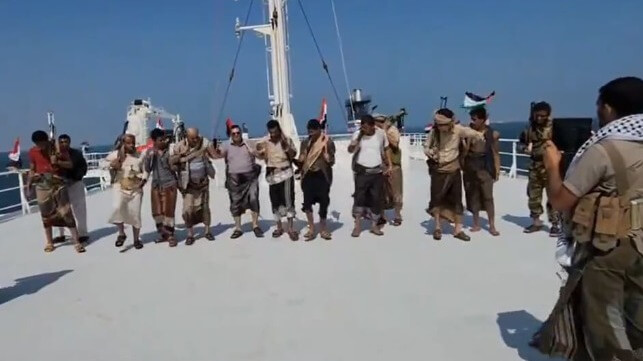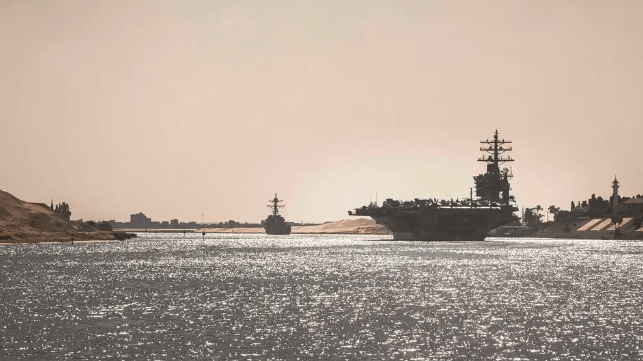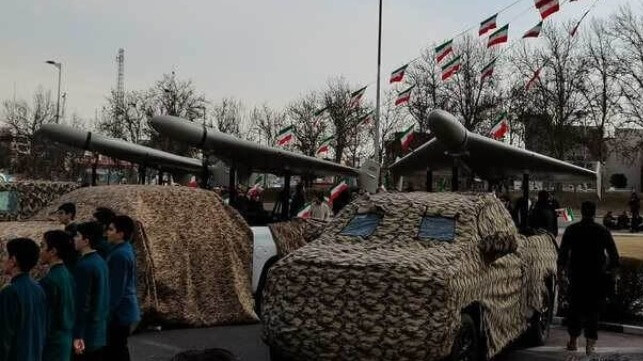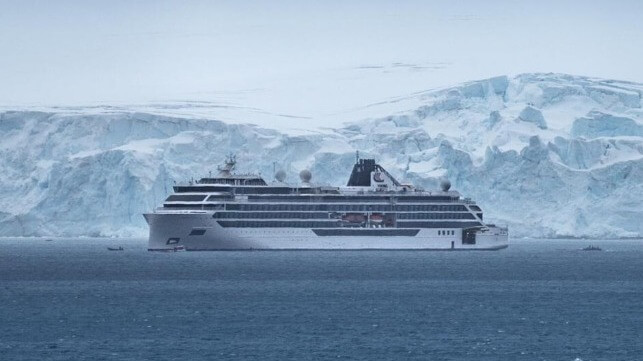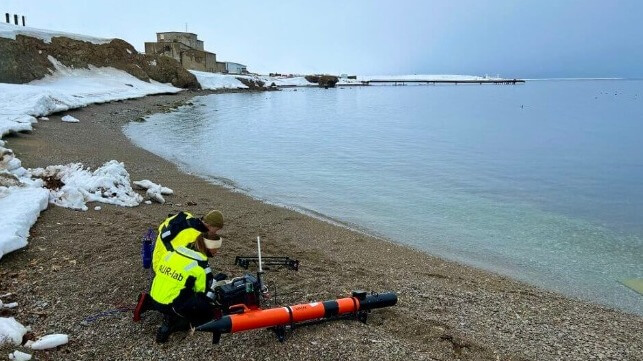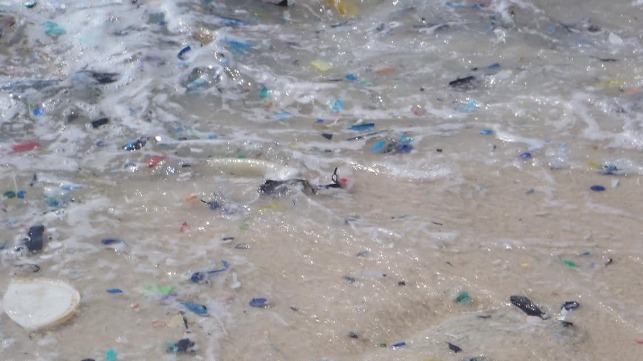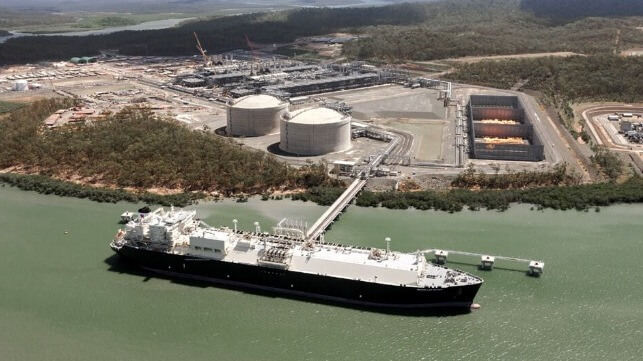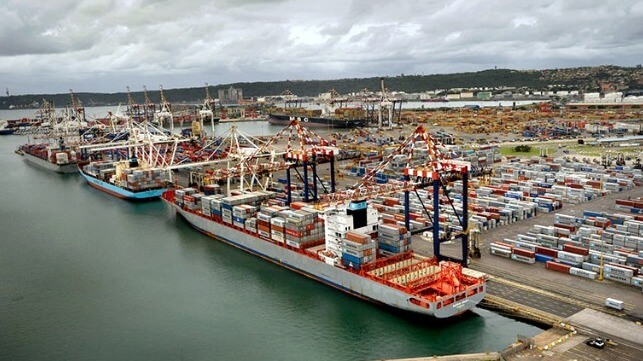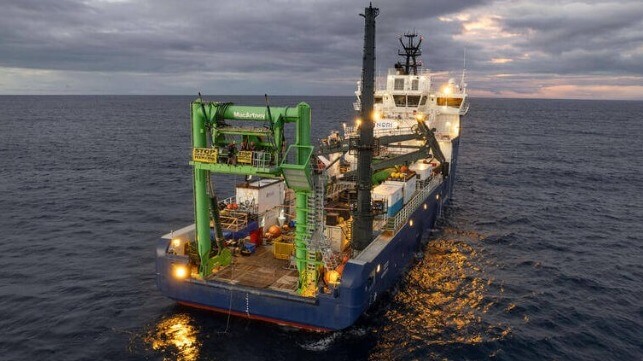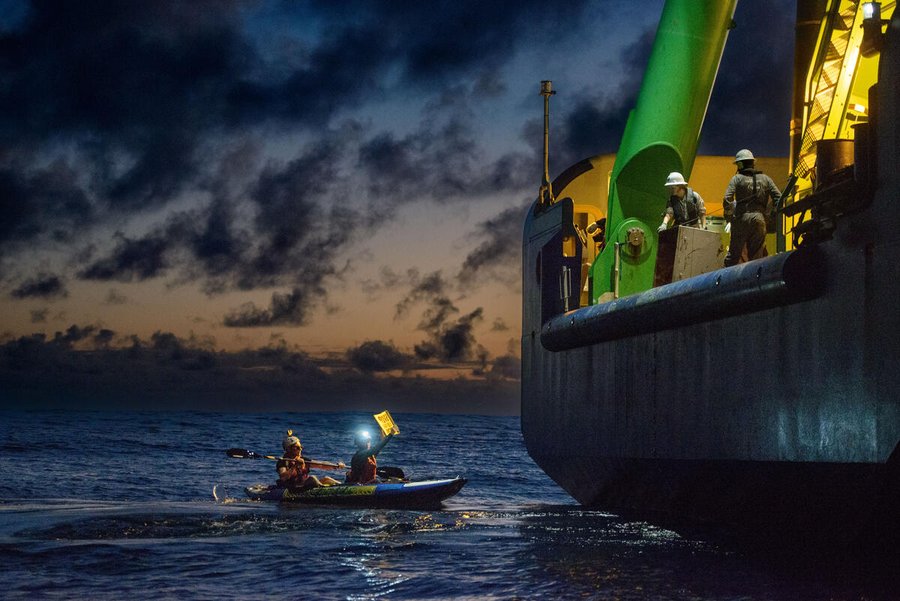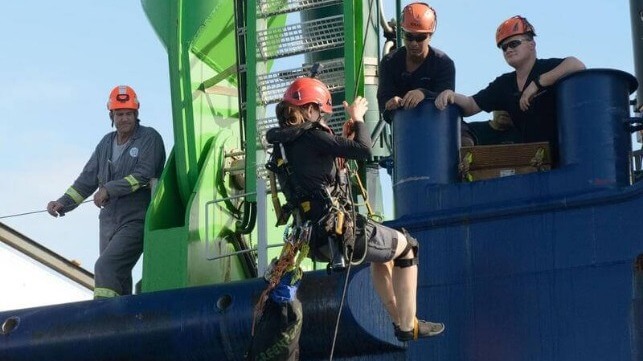[By Jackson Ambole and Emma Bryce]
In mid-November, hundreds of protestors marched through the streets of Nairobi, led by a ceremonial band. “Let polluters pay the price!” they chanted, while holding bright yellow placards reading “Plastic crisis = climate crisis” and “End multigenerational toxic exposure”.
The citizens were appealing to delegates from 163 nations who had gathered in the Kenyan capital for the third of five rounds of negotiations to develop, by December 2024, a global treaty to end plastic pollution. If effective, such a treaty could impose a global cap on the production of plastic, a material that is increasingly being linked to human health, as well as environmental, harms.
But at the end of the meeting, known as INC-3, many left disappointed. According to civil society groups, progress was held back by a minority of oil-rich states that wish to prioritise recycling and circularity over plastic production cuts, their efforts boosted by industry lobbying on the ground.
Ultimately, delegates left unable to agree on a plan to carry out interim work essential to laying the foundation for the fourth negotiation round, INC-4, which will take place in Ottawa, Canada in April 2024.
Some believe that a few nations with vested interests are being pandered to in the negotiations, at the expense of countries like Kenya where plastic leaves a ballooning footprint on environmental and human health. Fundamentally, the talks “were held hostage by countries that just don’t want anything out of the process,” says Jacob Kean-Hammerson, an ocean campaigner at UK-based NGO the Environmental Investigation Agency (EIA).
On the one hand, coalitions like the Africa Group of nations are calling for an ambitious treaty with legally binding measures to phase out certain chemicals and problematic plastics, such as single-use items and microplastics that are intentionally added to products. They also support a cap on global plastic production.
Kenyan delegates at the INC-3 meeting, along with other nations in the Africa Group, called for harmful chemicals and problematic plastics to be phased out (Image: Alamy)
On the other are countries for whom plastics are big business. Iran made a surprise announcement before the negotiations began, that it was forming a coalition of ‘like-minded countries’ including other oil-rich nations such as Russia and Saudi Arabia. The group, known as the Global Coalition for Plastics Sustainability, advocates for downstream waste-management to be the solution to plastic pollution. It argues that plastic itself isn’t the problem, but rather its unsustainable consumption and poor management.
According to observers, they were among a handful of countries that obstructed discussions on the ‘zero draft’ by raising objections to the text, staging walkouts, and inserting language that refers to weaker voluntary national actions, instead of legally binding measures. The zero draft had been drawn up after the previous round of negotiations in Paris, INC-2, and lists key targets for the treaty and options to achieve them.
In what many observers described as ‘delaying tactics,’ these fraught negotiations bled into the weekend and left countries with no time to agree on work to be done between INC-3 and INC-4. Many had hoped these tasks would include deciding on criteria with which to identify plastics and chemicals of concern, and the grounds on which to determine a global production cap. Instead “these negotiations ended with more questions than answers,” Kean-Hammerson says.
By the end of the week, the zero draft had grown from 31 pages to more than 100. Its text now reflects broad support for progressive measures such as caps on global plastic production, and all the most ambitious options remain in there, says Eirik Lindebjerg, global plastic policy lead at WWF International. But observers fear it’s also been diluted by ‘low-ambition language’. There’s a worry going forward that if countries struggle to find common ground amid the array of diverging viewpoints, “some delegations start to lower their ambitions for the ease of compromise,” says Lindebjerg.
Reduction vs recycling
For a long time, the general response to plastic pollution has been to turn to recycling. But the huge variety of plastic types, the dozens of additives that most plastics contain, and the low quality of many products, limits their recyclability. In fact, recycling rates are just 9% worldwide, and environmentalists say it isn’t the solution it was pitched to be.
Therefore, many countries and campaigners advocating for an ambitious treaty are calling for the production of virgin plastic to be capped. “That’s a big-ticket item. It’s what most civil society rights-holders and a lot of ambitious countries really want. But it’s controversial,” says Christina Dixon, ocean campaign leader at EIA.
Scientists have been saying the sheer volume of plastic being produced has become unmanageable. Earlier this year, a group of them calculated that in July 2023 we officially produced more plastic waste than global infrastructure can control.
Some companies including ExxonMobil and industry groups like the American Chemistry Council have championed an alternative type of recycling called chemical recycling. Conventional ‘mechanical’ recycling involves shredding plastic into pieces, and melting them into pellets that become the base for new materials. Chemical recycling uses methods such as pyrolysis and gasification to turn plastic back into petrochemicals that can be used to make new materials, they say.
But a report by the Nordic Council found that even if this method was ramped up, by 2040 it would still only be able to recycle 3% of annual production. Chemically recycled plastic is often also turned into oil that’s burned as fuel, while the recycling process generates emissions and solid hazardous wastes that threaten surrounding communities. “It’s not effective enough to make a dent in the problem, and it is such a toxic nightmare that it’s not worth doing,” says Jennifer Congdon, deputy director at Beyond Plastics, an organisation seeking to end plastic pollution.
Plastic waste isn’t just about the physical litter we see, Congdon adds. Because 99% of it comes from fossil fuels – coal, oil, and gas – if production continues growing, the emissions will be “astonishing,” says Daniela Duran Gonzalez, a senior legal campaigner at the Centre for International Environmental Law (CIEL). By 2050, greenhouse gas emissions from plastics are going to consume up to 13% of the global carbon budget we have left to achieve the goals of the Paris Agreement, she says. In 2019, plastic production was behind 3.4% of greenhouse gas emissions.
A starting point would be to dial back the single-use plastics that are often tossed away within minutes and make up 40% of plastic production today, Congdon says. But companies who are investing billions in expanding plastic infrastructure, and finding new applications for plastics, are unlikely to welcome that approach.
An analysis by CIEL found that 143 representatives from petrochemical and plastic-producing companies attended the talks in Nairobi, up 36% from the previous negotiations. They had more people on the ground than the 70 smallest national delegations.
These vested interests could influence the particulars of the treaty, especially as some industry representatives enter the negotiating chamber as members of national delegations, says Carroll Muffett, president and CEO of CIEL.
Muffett is also concerned that a procedural problem left over from INC-2 is playing into the hands of oil-producing nations and attendant industry delegates. The talks in Paris were stalled for two days over a disagreement on whether decisions should be passed by a democratic two-thirds majority vote, or by consensus – meaning a single nation has the power to throw out a majority decision.
The issue remains unresolved. Now, Muffett fears that without a clear way to solve disagreements, nations might shy away from disputes over controversial elements of the treaty like production caps, and this might ultimately favour oil-producing nations. “The real threat is that we end up with a lowest common denominator, low-ambition treaty – and no way of ever breaking out of that.”
China Dialogue Ocean contacted the American Chemistry Council to ask for their position on reduction. They declined to be interviewed, instead sharing a press release that focused on the need for the treaty to include stipulations on product redesign and better waste management, to enable recycling and reuse. We also contacted the Alliance to End Plastic Waste, another industry group that was in Nairobi, but received no response.
Plastic chemicals
Rights groups had also hoped to make headway in Nairobi on the issue of plastic chemicals. There are 13,000 known chemicals in plastics, with more varieties being produced every year, but knowledge about their effects is limited.
“Chemicals obtained from fossil fuels are the additives that make a variety of different plastics hard, flame-resistant or flexible. These are chemicals linked to reproductive harm, cancer, obesity and diabetes,” explains Bjorn Beeler, general manager and international coordinator at the International Pollutants Elimination Network (IPEN).
What’s more, chemicals accumulate in plastics through recycling, says Bethanie Carney-Almroth, an ecotoxicologist at the University of Gothenburg and a member of the Scientists Coalition. The coalition includes 250 experts who provide scientific guidance to member states throughout the treaty negotiation process. “Toxic chemicals in plastics complicate their reuse and disposal and hinder recycling,” she says. “Until we get a handle on chemicals, we cannot safely recycle plastics.”
Meanwhile, chemical impacts may be felt unequally across the globe. According to Beeler, “lack of global plastics controls allows the accumulation of plastics and their toxic ingredients, particularly in Africa, Asia and Latin America.”
This is why scientists, civil society groups, and certain countries are calling for a treaty that improves transparency by requiring companies to report the chemicals their plastic products contain. Carney-Almroth also wants to see fewer plastic chemicals: “Me and some of my colleagues are asking for what we’re calling ‘chemical simplification’… reducing the numbers of chemicals that we’re using, which would make it easier to monitor them and handle reporting.” She believes that the treaty should ultimately have an annex of chemicals of concern for future bans or phase-outs, which would be updated in line with emerging research.
Work before INC-4 in Ottawa could start establishing the criteria for pinpointing harmful chemicals that a treaty could start to phase out. The International Council of Chemical Associations, an industry body representing global chemical manufacturers, says it will support these goals by developing a plastic additives database. But, as chemical reductions would impact these companies’ revenue streams, this is another frontier where lobbyists could “prevent the treaty from protecting human health”, warns Tadesse Amera, IPEN’s co-chair.
Ultimately, a bold treaty will recognise that plastics and their chemicals are a question of human health, says Pete Myers, a member of the Plastic Health Council, and chief scientist at Environmental Health News. The globe has to choose “whether to smother the earth with toxic plastics or gain the courage and foresight to stop the onslaught.”
A just transition
In many ways, Kenya, host of the INC-3 negotiations, has led the charge on tackling plastic pollution. In 2017, it banned the manufacture and use of polythene bags, followed by a 2020 ban on single-use plastics in national parks, forests and beaches. In July 2022, it enacted the Sustainable Waste Management Act making it the first country in the world to subject all products, including plastics, to extended producer responsibility – meaning manufacturers remain responsible for products even after purchase.
But imports of banned plastics still pose a challenge to the enforcement and implementation of these regulations. “In Kenya, we are still battling with the problem of plastic waste. Our water bodies are choking, and dumpsites are full of plastics which form 20% of the 2,400 tonnes of waste generated daily in Nairobi alone. Illegal flows of plastics from neighbouring nations is a problem,” says Ayub Macharia, Kenya’s head of delegation at INC-3. He says a global plastics treaty will be vital “since it will bind states into formulating national and regional regulations to tackle the problem of illegal flow.”
James Wakibia, an environmental activist who led the push to ban single-use plastics in Kenya, agrees that a treaty would help Kenya deal with illegal imports.
Meanwhile, an estimated 36,000 Kenyans depend on waste for their livelihood as waste pickers. Their rights and welfare must be taken into account in a treaty that seeks to end plastic waste, says John Chweya, president of the Kenya National Association of Waste Pickers.
“The listing of the terms ‘waste pickers’ and ‘just transition’ for definition in the glossary of the zero draft treaty text was a big win for us,” he says. “We are calling for a sustainable, fair, equitable and inclusive transition to safeguard interests of waste pickers who directly rely on plastic waste as a major source of income.”
The Africa Group is now trained on the target of an ambitious treaty, says Linda Kosgei, a member of the Kenyan delegation. “Despite the disappointing outcome of INC-3, Africa remains united in calling for full transparency and information disclosure along the entire plastic value chain.” Where she and others had hoped the Nairobi negotiations would deliver a mandate to start developing a first draft of the treaty text, the negotiations instead ended with a need to finalise a new version of the zero draft.
Now, despite there being no official order for intersessional work, WWF’s Lindebjerg and others are calling for nations to organise meetings and get together before INC-4, to make up for lost time. Lindebjerg says: “Progressive countries now have to take this in their own hands, both for intersessional work and future INC decisions.”
Hellen Kahaso Dena, Pan African Plastic Project lead for Greenpeace Africa says the globe must find a way forward without oil and gas producers dictating the terms. “A plastic-free future is possible if governments resist the corporate capture by oil-producing countries.”
Jackson Ambole is an award-winning journalist based in Nairobi, Kenya
Emma Bryce is a freelance journalist who covers stories focused on the environment, conservation and climate change. You can tweet her at @EmmaSAanne and read more at www.emmabryce.com
This article appears courtesy of China Dialogue Ocean and may be found in its original form here.
The opinions expressed herein are the author's and not necessarily those of The Maritime Executive.
